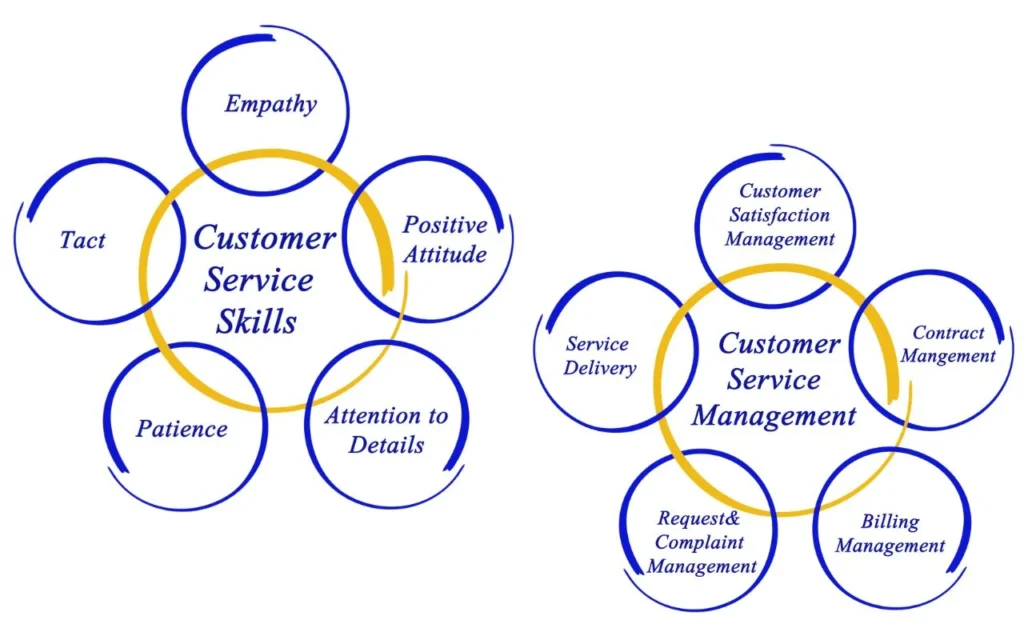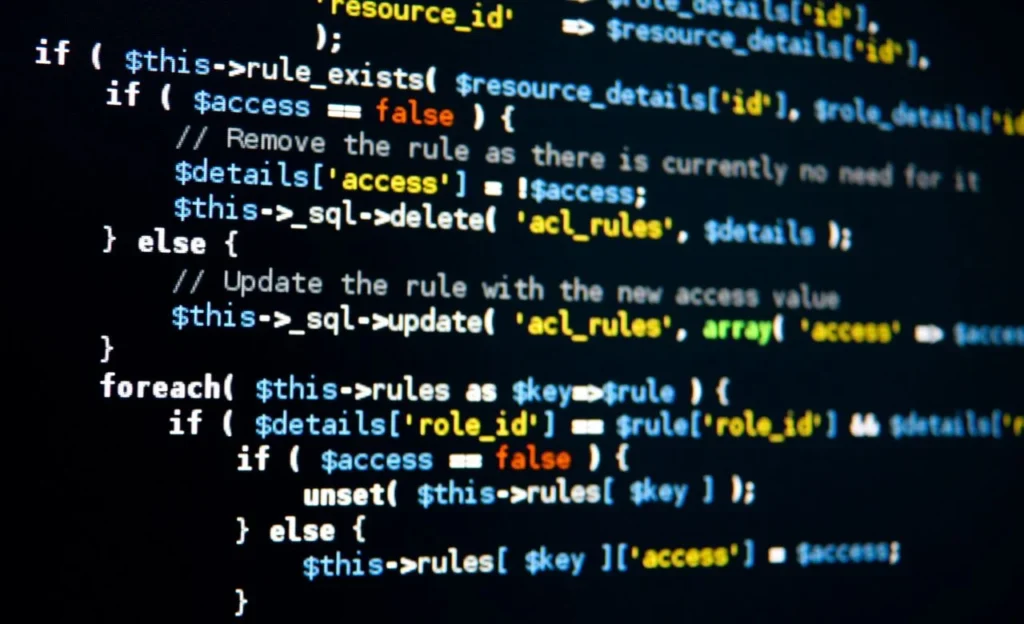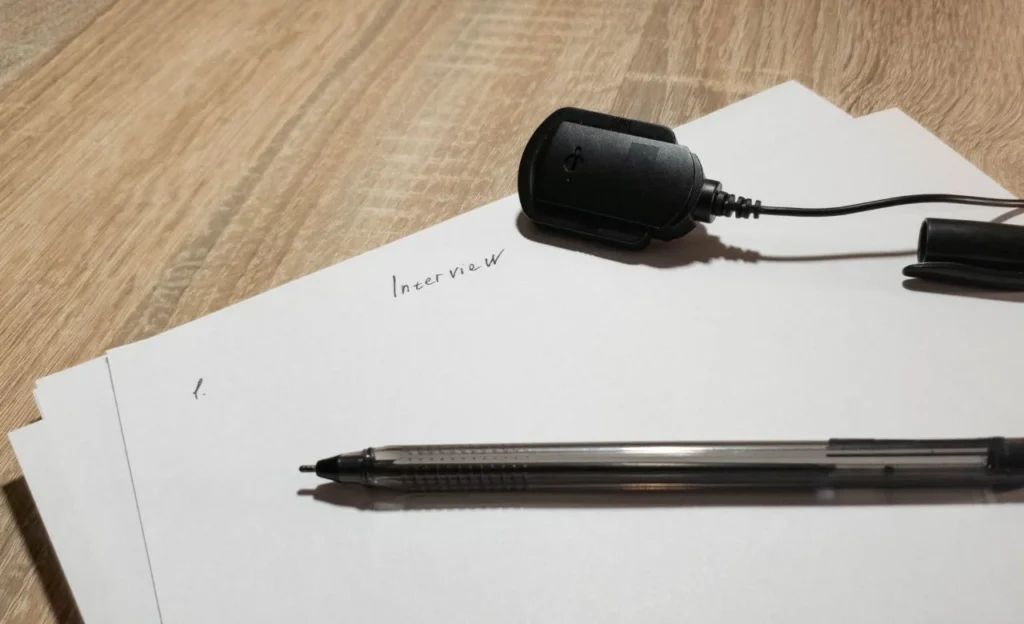Coding an interview transcript is crucial in qualitative research, where the exploration of non-numerical evidence is paramount. So, how to code an interview transcript? This process facilitates organizing and interpreting gathered qualitative data, lending structure to observations and participant insights.
I will delve into the intricate process of coding an interview transcript, shedding light on the significance of qualitative research, the art of analysis, and the practical steps involved. You can use transcriptal for YouTube video transcriptions.
What Is Coding In Qualitative Research?
Coding is the backbone of data analysis in the intricate world of qualitative research. It is a systematic process that involves categorizing and interpreting qualitative data, transforming it from raw information into a structured framework.
This essential step bridges the gap between unorganized observations and meaningful insights, facilitating a more profound understanding of the studied phenomenon.

1. Interpretation and Organization
Qualitative data, often in interviews, focus groups, or open-ended surveys, demands interpretation and organization. Coding provides the means to achieve this by breaking the data into manageable segments. Researchers assign labels or codes to specific data portions through the coding lens, creating a structured system that lays the groundwork for in-depth analysis.
2. Enhancing Rigor and Credibility
Coding is not merely a procedural step; it is a strategy to enhance the rigor and credibility of qualitative research. Researchers can navigate the complexities inherent in qualitative information by systematically organizing data. This organized structure not only aids in identifying patterns and themes but also provides a transparent framework for subsequent scrutiny and validation.
3. Transforming Observations into Insights
The benefit of coding lies in its ability to transform diverse observations into meaningful insights. It allows researchers to distill the essence of participants’ responses, capturing the nuances that might be overlooked in unstructured data. This transformation is pivotal in ensuring that the qualitative data contributes anecdotal evidence and valuable and analyzable information.
Importance Of Interviews In Qualitative Research
Qualitative research emphasizes exploring the depths of human experiences and finds one of its most potent tools in the form of interviews. The significance of interviews in qualitative research extends beyond mere data collection; it serves as a gateway to authentic, nuanced narratives that add depth and context to academic and business studies.

1. Humanizing Data: Adding Color to Academic and Business Reports
Quantitative data, while essential for many types of research, often falls short of providing a holistic understanding of a phenomenon. Interviews, on the other hand, bring a human touch to the data, adding layers of richness and complexity. The vivid narratives obtained through interviews counterbalance the starkness of statistical figures, making academic and business reports more engaging and relatable.
In academic studies, particularly those focusing on specific communities, interviews provide a direct line to the lived experiences of individuals within those communities. These firsthand accounts inject life into research papers, offering readers more than abstract concepts and numerical results.
Similarly, in business studies, interviews, especially in focus groups, allow researchers to tap into their target audience’s subjective perceptions and preferences. This human-centric approach not only enhances the quality of the study but also contributes to its real-world applicability.
2. Direct Access to Ground-Level Stories
One of the unique advantages of interviews is the ability to access ground-level stories. Through thoughtful interview analysis, researchers can unearth narratives that might otherwise remain buried. These stories often encapsulate the essence of a phenomenon, providing a level of insight and understanding that goes beyond what can be gleaned from surveys or quantitative data alone.
Consider an example where a researcher conducting an interview analysis approaches an individual with a one-of-a-kind story related to the study’s focus. When incorporated into the research, this story adds a unique perspective that transcends the boundaries of conventional data. Such narratives make the study more relatable and contribute to the findings’ authenticity and credibility.
3. Maintaining Integrity: Avoiding the Trap of Embellishments
While the power of interviews lies in their ability to capture authentic narratives, a delicate balance must be maintained. Ensuring the integrity of the information gathered is paramount. Researchers must navigate the fine line between capturing genuine experiences and avoiding the pitfalls of embellishments or misrepresentations.
The interviewee’s perspectives are invaluable, and a skilled researcher employs interview analysis techniques to distill these perspectives without distorting the core truths.
Maintaining the integrity of the study involves diligent transcription and coding of interview data, ensuring that the final analysis accurately reflects the nuances conveyed by the participants. This commitment to authenticity enhances the study’s credibility and guards against potential misinterpretations.
Ideal Contexts For Interviews In Qualitative Research
While the benefits of interviews in qualitative research are clear, it’s essential to recognize the ideal contexts in which interviews prove most fruitful.

1. Academic Studies Focused on Specific Communities
In academic research, interviews shine as a primary data collection method, particularly when delving into the intricacies of specific communities. The ability to capture the lived experiences, cultural nuances, and individual perspectives within these communities offers a depth of understanding that quantitative data alone cannot achieve.
2. Business Studies Concentrating on Target Audiences
For business studies, interviews, especially in focus groups, provide a direct line to the target audience’s minds. Understanding consumer preferences, opinions, and experiences on a qualitative level goes beyond the surface-level insights offered by market surveys. This depth is invaluable for businesses seeking to tailor their products or services to meet the nuanced needs of their customers.
3. Interviews Bringing Life to Otherwise Bland Studies
In broader terms, interviews have the transformative power to breathe life into otherwise bland studies. Qualitative data gathered through interviews introduces a narrative element that captivates readers and stakeholders. People, inherently drawn to human interest stories, find qualitative studies more accessible and engaging than a list of numbers or statistical analyses. Now, you should know move towards this question: “how to code an interview transcript.”
How To Analyze Interview Data?
Thematic analysis emerges as a prevalent and effective method for scrutinizing qualitative data, including interviews and transcripts. This approach involves meticulously examining the data to identify recurring themes, providing a structured pathway to understand individuals’ views, experiences, values, or opinions.
Analyzing Transcripts with Inductive and Deductive Methods
Thematic analysis can be approached through two primary methods: inductive and deductive.
- Inductive Analysis: This method entails approaching the data without a predetermined framework. The researcher navigates through the material, aiming to develop a theory based on emerging patterns and themes.
- Deductive Analysis: In contrast, deductive analysis demands a structured view. The researcher establishes predetermined categories before analyzing, aiming to test existing theories.
Both approaches come with their challenges. Inductive analysis requires a keen eye to identify emerging patterns, while deductive analysis mandates careful adherence to pre-established categories. In either case, researchers must navigate the intricate landscape of qualitative data, steering clear of biases and misconceptions.
Pitfalls In Interview Coding
The journey from interviewing to publishing a study is fraught with potential pitfalls. One common stumbling block is the loss of essential facts during the transcription process.
Detailed transcription is not merely a preliminary step; it’s a critical bridge between the raw interview data and the final study. Failure to transcribe accurately can compromise the integrity of the study, leading to misinterpretations and skewed conclusions. Now, you should now move towards this question: “how to code an interview transcript.”

How To Code An Interview Transcript | Step-By-Step Guide
How to code an interview transcript? The process of coding an interview transcript involves several nuanced steps. Each step contributes to creating a structured and meaningful framework that lays the foundation for insightful analysis.
Step One – Transcribe Your Interview with Transcriptal
In the digital age, artificial intelligence (AI) has revolutionized the transcription process. Transcriptal, a pioneer in low-cost automated transcription software, leverages AI to streamline the transcription of audio and video files.
By plugging your files into transcriptal, you can generate accurate transcripts in minutes, a task that once demanded hours of manual labor. This technological advancement is a game-changer, especially in large-scale studies, where time efficiency is paramount.
Step Two – First-Round Coding Pass
With the transcript in hand, the next step is the first-round coding pass. This involves reading through the data and assigning preliminary codes to different sections of the interviews. At this stage, codes need not be perfect; they are fluid and subject to evolution as the process unfolds. Different coding techniques come into play, each offering a unique perspective on the data.
- In Vivo Coding: This method involves using the participant’s own words, staying true to the original intent and meaning.
- Process Coding: Here, codes capture actions, often denoted by verbs ending in “ing.”
- Open Coding: Involves breaking down qualitative data into smaller excerpts with loose and tentative codes, focusing on definition, category, label, and description.
- Descriptive Coding: Aims to summarize the transcript, focusing on the overarching content of the interview.
- Structural Coding: This involves categorizing sections of transcripts based on a specific structure, particularly useful in larger studies with numerous interviews.
- Values Coding: Concentrates on the person’s attitudes, beliefs, and values.
- Simultaneous Coding: As researchers gain experience, they may employ multiple coding systems on the same qualitative data set.
Step Three – Create Categories and Subcodes
Following the first pass, the focus shifts to creating categories by grouping similar codes. The organization of these categories depends on the nature of the study, and it often involves a trial-and-error process to find a structure that aligns with the research objectives. Now you know about how to code an interview transcript.
Step Four – Complete Further Rounds of Coding
Subsequent coding rounds delve deeper into the data. The initial coding pass is considered fast and loose, allowing for flexibility. Further rounds involve re-examining codes and categories, seeking additional patterns, and refining the qualitative data analysis. The number of codes decreases as the process unfolds, and the focus shifts towards developing concepts and theories.
Types of Coding in Further Rounds
1. Thematic Analysis
The thematic analysis aims to identify recurring themes and patterns within qualitative data. Each coding round reveals new trends, and researchers can begin merging codes. This may lead to pattern coding, where excerpts with similar codes are grouped under one overarching code.
2. Focused Coding
Also known as selective coding, focused coding involves finalizing a set of categories and codes based on the initial coding pass. This system streamlines qualitative data, resulting in an unaltered final code list.
3. Theoretical Coding
Theoretical coding involves creating a concept and organizing codes based on that concept. This process aligns with the findings during qualitative data analysis and contributes to theory development.
4. Elaborative Coding
For subsequent studies building upon previous research, elaborative coding ensures that current codes and categories align with the earlier study. This method maintains consistency and coherence in evolving research endeavors.
Step Five – Create Your Final Narrative
The coding journey culminates in the creation of a final narrative. Researchers are not constrained to a single coding system; employing multiple coding types is considered a best practice. The outcome could manifest as a theory, a narrative, or a compilation of findings.
This narrative-building process serves a dual purpose: it encapsulates the essence of the study. It provides a roadmap for other researchers to challenge, corroborate, or build upon the established framework. Now you know the answer – how to code an interview transcript?

End-To-End Coding Methods: Some Other Methods
Qualitative research emphasizes exploring the depths of human experiences and demands systematic approaches to extract meaningful insights. End-to-end coding methods provide structured frameworks that guide researchers from the inception of their study to the final analysis.
1. Interpretive Phenomenological Analysis (IPA)
Overview: Interpretive Phenomenological Analysis (IPA) is a qualitative research methodology that unravels how individuals make sense of their experiences. Employing an inductive approach, IPA starts with specific examples, extracting broader theories to illuminate the intricacies of human perception.
Methodology: Researchers employing IPA collect data through methods like interviews. The analysis involves uncovering themes and meanings embedded in participants’ narratives. A distinctive aspect of IPA is the concept of bracketing, where researchers consciously set aside preconceived assumptions to engage reflexively with the data, acknowledging and documenting their biases.
2. Thematic Analysis
Overview: Thematic analysis is a qualitative data analysis method that traverses through a dataset, identifying patterns of meaning to derive overarching themes. Like IPA, thematic analysis incorporates reflexivity, acknowledging the active role of a researcher’s subjective experience in shaping the meaning extracted from the data.
In thematic analysis, researchers scrutinize the data for common themes or patterns. Coding serves as the mechanism to identify and label these themes. The process involves immersing oneself in the data, extracting meaningful segments, and assigning codes that encapsulate the essence of each segment.
Methodology: Researchers utilizing thematic analysis read through data sets, such as interview transcripts or focus groups. The active engagement with the data helps uncover recurrent patterns, enabling the derivation of themes that capture the essence of participants’ experiences.
3. Grounded Theory (GT)
Overview: Grounded theory (GT) represents an end-to-end qualitative method geared towards uncovering new theories grounded in real-world data. Unlike traditional hypothesis-based research, grounded theory adopts an inductive approach, deriving theories directly from the data.
Methodology: The iterative data collection, analysis, and theory development process characterizes grounded theory. Researchers continue this cycle until theoretical saturation is reached, signifying that additional data would not yield new insights. This method encourages a constant interplay between data and theory.
4. Narrative Analysis
Overview: Narrative analysis delves into understanding how individuals construct stories about their lives. It involves dual layers of interpretation, considering the participant’s perspective on their narrative and the researcher’s interpretation.
Methodology: Personal narratives, ranging from topical stories to life narratives, are collected from diverse sources like journals, interviews, and focus groups. The researcher interprets these narratives, bringing insights into the intricacies of individual storytelling.
5. Qualitative Content Analysis
Overview: Qualitative Content Analysis is a systematic method for identifying, coding, and analyzing patterns of meaning within qualitative data. It provides a structured approach to understanding the underlying themes and patterns in data collected from various sources.
Methodology: Qualitative data, sourced from interviews, focus groups, documents, or social media posts, undergoes a rigorous process of identification and coding. The ultimate goal is to unravel the underlying themes, contributing to a deeper comprehension of participants’ experiences, thoughts, and feelings.
Distinguishing Features: While qualitative content analysis and thematic analysis share similarities, they differ in their approach to coding and analysis, showcasing the nuanced distinctions between these two widely used methods.
The Role Of Coding In Analysis
Coding is not an isolated activity but a precursor to a more extensive qualitative data analysis. Once coded, data becomes more manageable, enabling researchers to discern patterns, identify recurring themes, and draw connections between elements. This systematic approach is particularly crucial in thematic analysis, a common method in qualitative research.
In navigating the qualitative research landscape, researchers can leverage these end-to-end coding methods, each offering a distinct perspective and set of tools to uncover the richness embedded in qualitative data.
By embracing these methodologies, researchers embark on a journey beyond mere data analysis, delving into the intricate tapestry of human experiences and perspectives.
Conclusion
Successful interview coding is a multifaceted process that commences with creating a meticulously transcribed interview. In this regard, Transcriptal emerges as a pivotal tool, leveraging AI to expedite the transcription process without compromising accuracy. Coding, an indispensable facet of qualitative research, involves navigating various rounds and types to distill raw data into meaningful insights.
As qualitative studies continue to gain prominence, mastering the art of coding interviews becomes imperative for researchers seeking to unravel the intricacies of human experiences and perspectives. I hope now you know, how to code an interview transcript?


